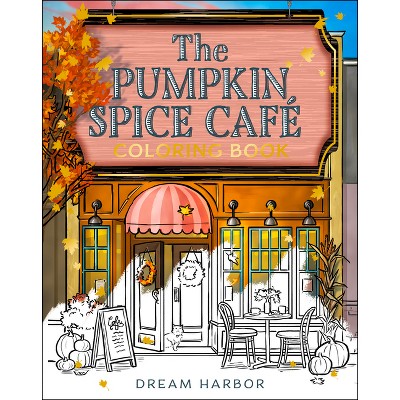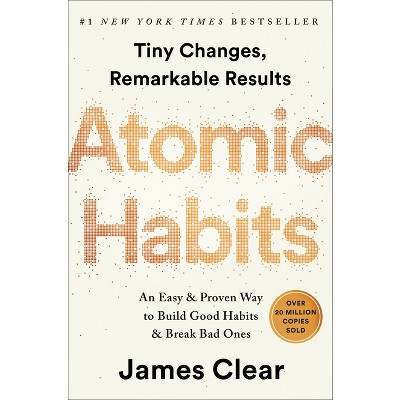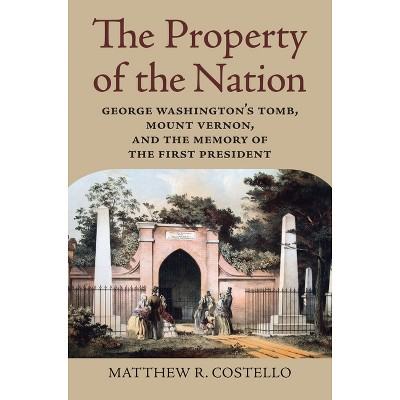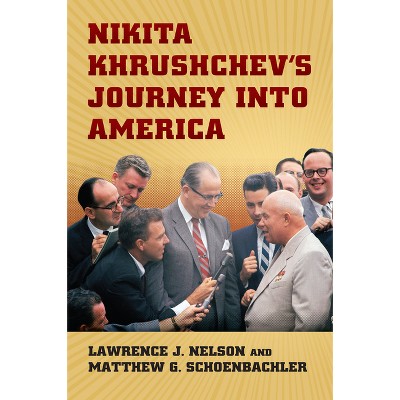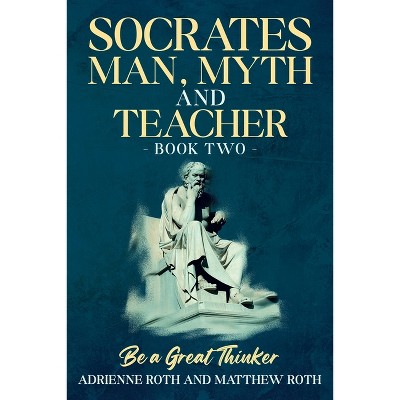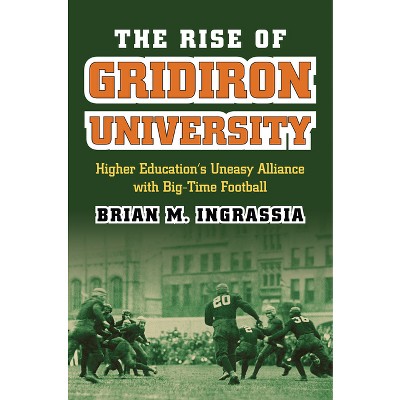Magic Bean - (Culture America (Hardcover)) by Matthew Roth (Paperback)

About this item
Highlights
- Choice Outstanding Academic TitleAt the turn of the twentieth century, soybeans grew on so little of America's land that nobody bothered to track the total.
- Author(s): Matthew Roth
- 368 Pages
- History, United States
- Series Name: Culture America (Hardcover)
Description
About the Book
Magic Bean traces the paths by which the soybean--as a crop, food, and idea--made its way into American farming, bodies, and culture over the course of the twentieth century. Along the way, it shows that its coming was by no means predictable, even as its consequences have been important.
Book Synopsis
Choice Outstanding Academic Title
At the turn of the twentieth century, soybeans grew on so little of America's land that nobody bothered to track the total. By the year 2000, they covered upward of 70 million acres, second only to corn, and had become the nation's largest cash crop. How this little-known Chinese transplant, initially grown chiefly for forage, turned into a ubiquitous component of American farming, culture, and cuisine is the story Matthew Roth tells in Magic Bean: The Rise of Soy in America.
The soybean's journey from one continent into the heart of another was by no means assured or predictable. In Asia, the soybean had been bred and cultivated into a nutritious staple food over the course of centuries. Its adoption by Americans was long in coming--the outcome of migration and innovation, changing tastes and habits, and the transformation of food, farming, breeding, marketing, and indeed the bean itself, during the twentieth century. All come in for scrutiny as Roth traces the ups and downs of the soybean's journey. Along the way, he uncovers surprising developments, including a series of catastrophic explosions at soy-processing plants in the 1930s, the widespread production of tofu in Japanese-American internment camps during World War II, the decades-long project to improve the blandness of soybean oil, the creation of new southern soybean varieties named after Confederate generals, the role of the San Francisco Bay Area counterculture in popularizing soy foods, and the discovery of soy phytoestrogens in the late 1980s. We also encounter fascinating figures in their own right, such as Yamei Kin, the Chinese American who promoted tofu during World War I, and African American chemist Percy Lavon Julian, who played a critical role in the story of synthetic human hormones derived from soy sterols.
A thoroughly engaging work of narrative history, Magic Bean: The Rise of Soy in America is the first comprehensive account of the soybean in America over the entire course of the twentieth century.
Review Quotes
"Roth offers a compelling account of the soybean and its significant scientific, agricultural, environmental, and technological consequences."--Middle West Review
"Magic Bean is a valuable contribution to multiple historiographies and a model commodity study."--Journal of Interdisciplinary History
"This study is based on sound research, and the structure leads the reader through the science and technology that made soybeans acceptable for human consumption. Food and social historians will find this study useful. Agricultural historians should consider this book essential reading."--Pacific Historical Review
"Roth makes sense of soy's paradoxical rise as both the ideal flexible commodity and a potent symbol for alternative visions. Magic Bean reveals the work that made soy the ubiquitous but often invisible product it is today."--Western Historical Quarterly
"Roth's research alone makes Magic Bean an indispensable resource for anyone interested in further historical study of soy. For scholars and lay readers eager to learn of the multifaceted ways soy has shaped Americans' diets, landscapes, and culture, [this book] is a must-read."--Missouri Historical Review
"The book is thoroughly researched and fully documented. It is recommended reading for anyone involved or interested in agriculture and the food industry including farmers. It is also recommended reading for those interested in vegetarian foods."--Nebraska History
"Roth pulls soy from obscurity and places it center stage. Magic Bean is an enjoyable read, and anyone interested in the cultures, science, and economics of American foodways will find much of interest between its covers."--Annals of Iowa
"In this captivating and highly readable history, Roth documents the incredible rise of the soybean and its myriad uses during the 20th century. . . will appeal to those interested in agriculture, food, and American history. Highly recommended."--Choice
"A lively, well-researched tale of how an obscure legume became the basis of a massive industry."--Wall Street Journal
"Magic Bean is compelling, comprehensive, and timely. Matthew Roth has provided a well-examined study of soy's place within a long century of changing agriculture, food, diet, and culture. In the process, he offers an original and admirably wide-ranging account of soy for our time."--Benjamin R. Cohen, author of Notes from the Ground: Science, Soil, & Society in the American Countryside
"A diverse cast of women and men promoted the soybean as devotedly as John Chapman did the apple, but their efforts have gone as unnoticed as soy lecithin in a chocolate bar. Matthew Roth's Magic Bean tells their stories and explains how a food often billed as a meat substitute became a linchpin of animal agriculture."--Kendra Smith-Howard, author of Pure and Modern Milk: An Environmental History Since 1900

